Film Description
Directed by Carly Hillis-Tedder and M.C. Mette.
A SCAD 2D animation graduation film.
A bat boy ventures into the forest at night to return a firefly to its natural habitat, but gets lost in the dark without its light to guide him.
General Responsibilities
I was brought onto this project to provide structure and protect scope during its production phase, as well as communicate with outsource animators and colourists.
When we were getting too close to the deadline, I also picked up colouring tasks so the animators could focus on the more important tasks.
Estimating and Prioritising each Shot
- The project roadmap that was made before I joined the project did not take any shot length or difficulty into account. The first thing I did was go through each shot and note the amount of frames and animation difficulty. I then assigned each shot a classification from A to D. A being the most difficult and most import shots and D being the easiest and least important. I combined these two factors because an A shot was most important and thus had to look the best, which means it automatically required more skill than a D shot.
- I made a Trello card for each shot where I listed all details. We used these to assign tasks to artists, with our main artists picking up the A and B shots, while other artists picked up the C and D shots.
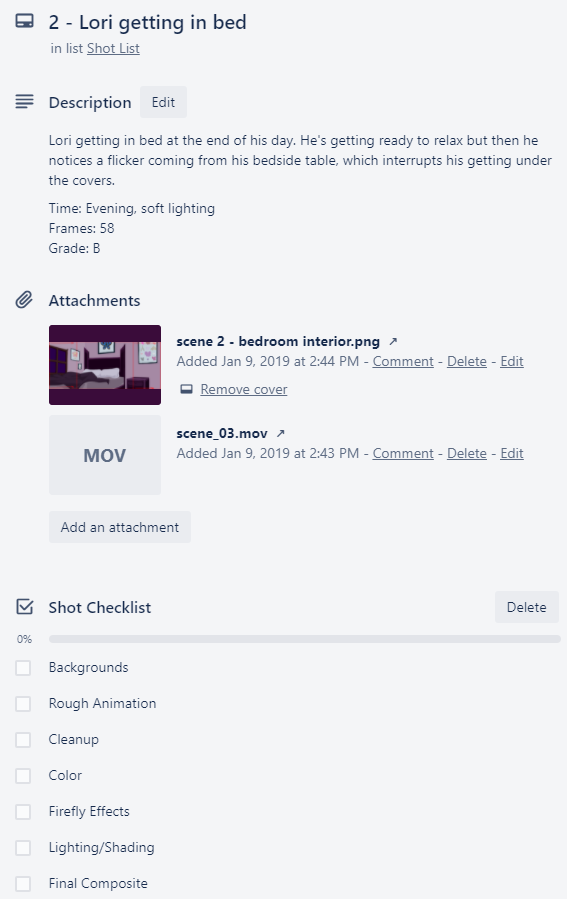
Guarding Scope and Delivery
- Based on the shot estimates, I set up a project roadmap. I factored in each stage and the deadlines given by the university.
- We had a short meeting every other day to talk about the project’s current status. The two main artists would update me on what they were doing and I would update them on what the outsource artists were doing, as well as any developments. During this meeting I showed a visualisation of our current trajectory to help them understand whether we were on track or not. Near the end we were running out of time to finish everything according to the directors’ vision. Their perfectionist nature made it hard to convince them to focus on quantity over quality. Visualising the trajectory made them realise that we could not afford to focus on the details.
- It became clear that one of the directors was great at concepting but not as good at animation. I moved her onto other tasks, such as marketing and colouring while the other director worked on the higher priority shots. This did mean, however, that we were now falling behind schedule. To remedy this, I reached out and recruited several other artists.
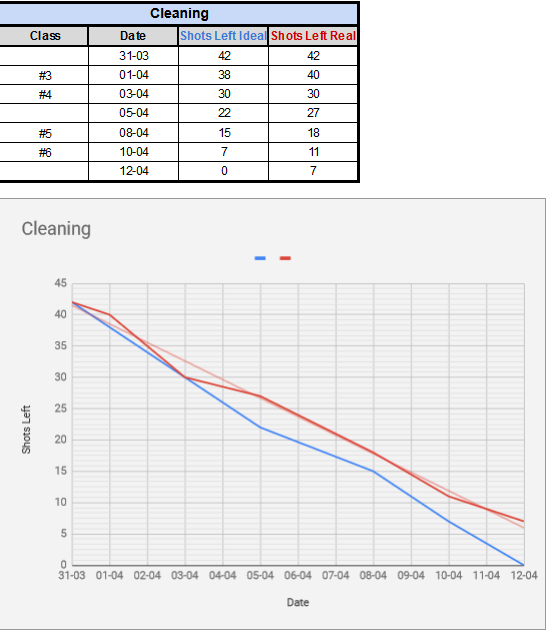

Recruiting and Communication with Outsource Artists
- I reached out to other artists to help with in-betweening, cleaning, and colouring to reduce pressure on the director doing the high priority shots.
- I set up several documents to onboard the outsource artists so they could find all relevant information without having to ask. This package was sent to them upon joining development, although I also sat with them to go over everything quickly.
- I checked in with each artist every other day to check on progress and if they were running into trouble. Important information was relayed to the directors, and I dealt with any problems they ran into.
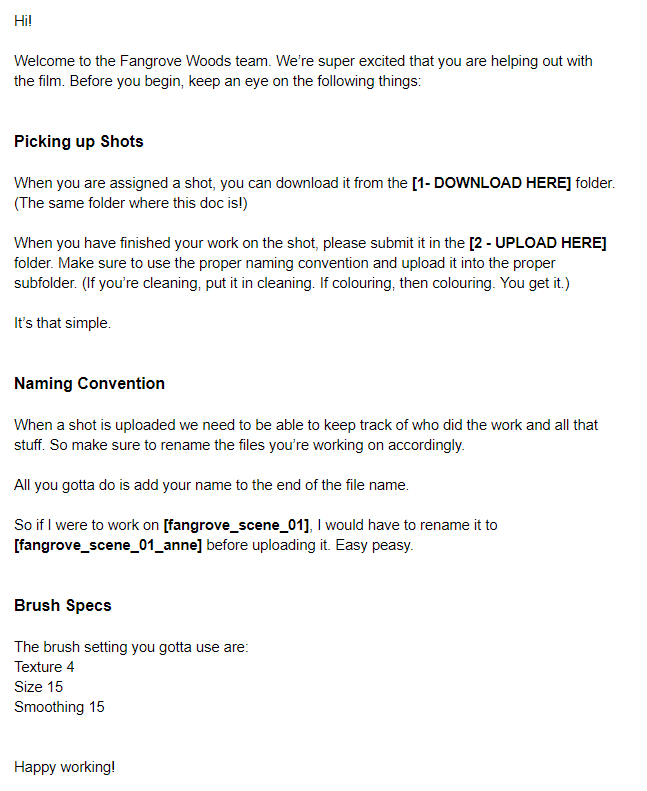
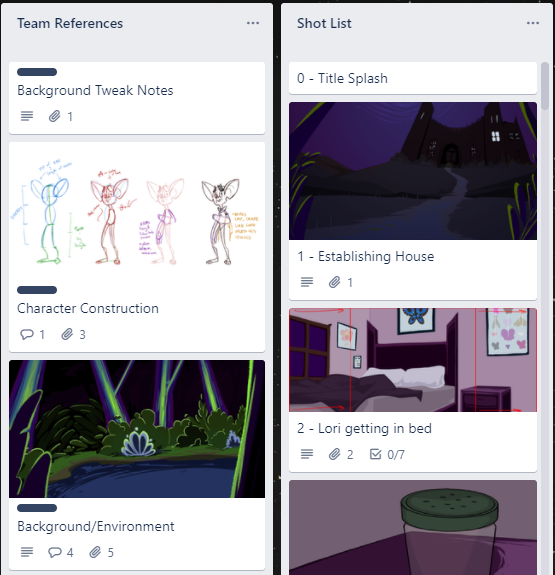
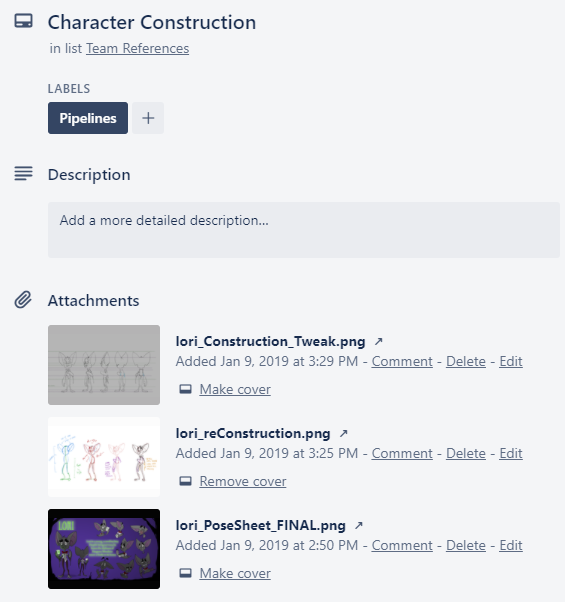
Colouring Shots
- Near the end of the project most of our outsource artists were graduating and no longer had time to help us. However, there were still a lot of shots that had to be cleaned and coloured. I asked for half an hour from one of the directors and had him explain how to do this work. Afterwards I joined the colouring team so that the actual animators could focus on the more “skilled” labour.
PROJECT INFORMATION
ROLE: Producer
PROJECT TYPE: 2D Student Film
UNIVERSITY: Savannah College of Art and Design (SCAD)
TEAM SIZE: 3
DEVELOPMENT PERIOD: Apr 2018 – May 2019
DATE RELEASED: May 29, 2019
Please send me a message for the password if you want to see the whole film!